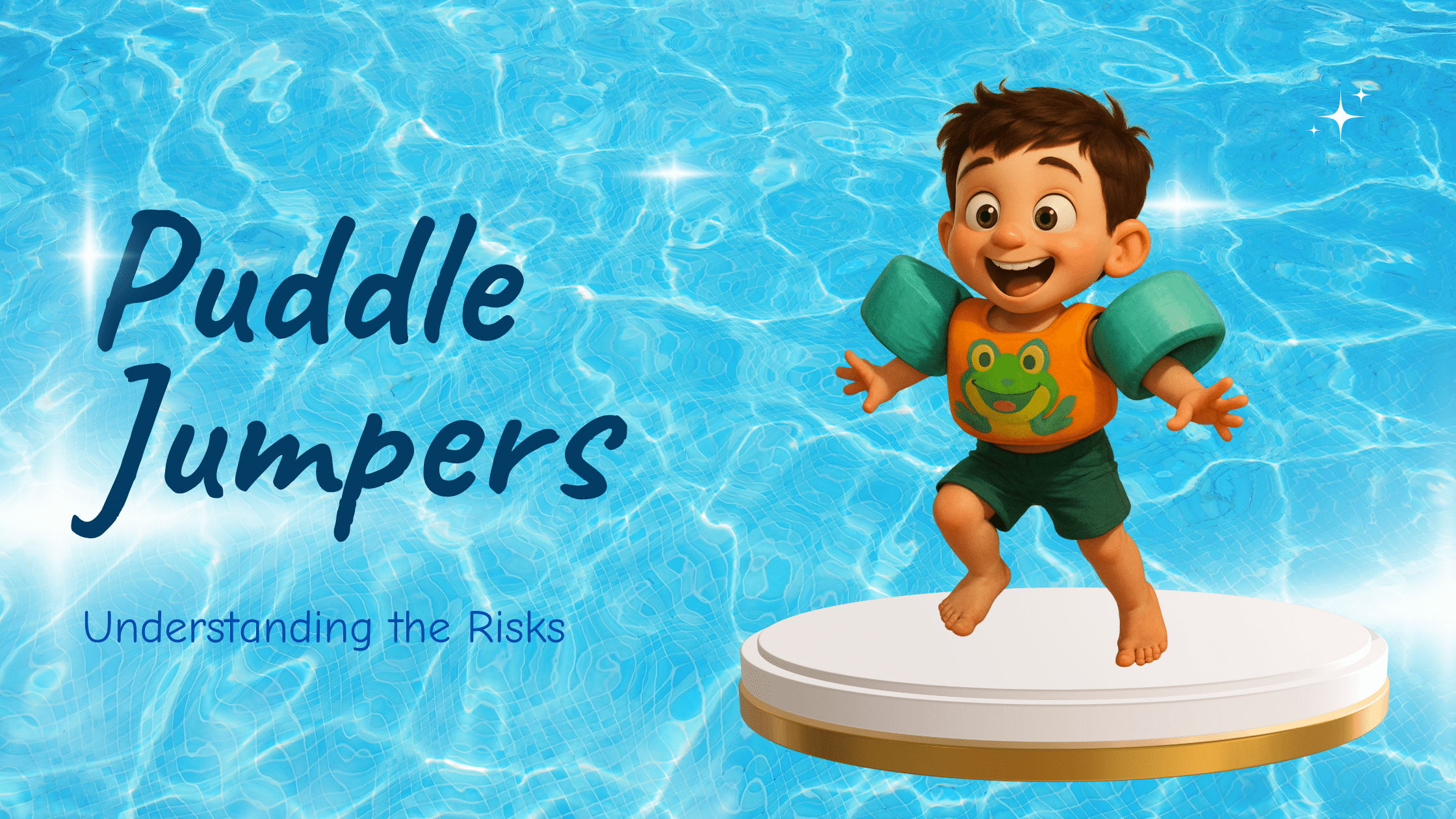Those brightly coloured floaties we often see at pools and beaches, known as puddle jumpers, might seem like a simple solution for keeping young children safe in the water. Beneath that surface of security, however, there are some significant risks parents should be aware of. We’re here to explore why relying on puddle jumpers might not be the best approach and why focusing on proper swimming skills is so important for your little ones.
1. Promoting Incorrect Swimming Posture
Imagine trying to learn to ride a bike while it’s constantly being held upright. That’s similar to what happens with puddle jumpers. They often force a child into an unnatural, upright position in the water, with their head held high and feet low. This posture doesn’t support learning proper horizontal swimming techniques. Instead, children might develop a vertical, almost “drowning position,” making it difficult to maintain buoyancy and control in the water. This can actually hinder their progress in becoming confident and capable swimmers because once it’s removed, they will have to learn to get comfortable in a position they aren’t used to.
2. Creating a False Sense of Security
Think about a child who’s always used training wheels on their bike. They might believe they can balance independently, even when the training wheels are removed. Puddle jumpers can create a similar illusion of self-reliance in the water. Children using these devices might mistakenly believe they can swim on their own without any flotation aid. This misplaced confidence can be incredibly dangerous if they unexpectedly enter the water without their puddle jumper, as they will have the false confidence to jump right in, yet lack the necessary skills to stay afloat.
3. Delaying the Development of Essential Life Skills
Learning to swim is a crucial life skill, and puddle jumpers can inadvertently delay this important development. By providing artificial buoyancy, these devices can prevent children from engaging the necessary muscles and learning the natural movements for floating, kicking, and moving through the water effectively. Relying on puddle jumpers can essentially keep children unprepared for real-life water situations when there is no flotation device available. Proper swimming lessons, on the other hand, teach these fundamental skills from the ground up.
4. Fostering a Lack of Respect for Water Safety
Developing a healthy respect for the water and understanding its potential dangers is vital for young children. Puddle jumpers can sometimes undermine this by giving children a false sense of invincibility in the water. This can lead to risky behaviours, such as underestimating the depth of the water, venturing into deeper areas without supervision, or attempting unsafe entries into the water. True water safety comes from understanding one’s abilities and limitations, something that reliance on flotation devices can undermine.
5. Potential for Fatal Accidents
Tragically, there have been instances where children who regularly used puddle jumpers drowned when they weren’t wearing them. As these devices can prevent the natural development of swimming skills, they create a false sense of security, and so children may not possess the inherent ability to stay afloat in unexpected situations. It’s essential for parents to recognize that while puddle jumpers can offer temporary peace of mind, they are by no means a replacement for proper swimming education and vigilant supervision.
Conclusion: Prioritize Swimming Skills Over Puddle Jumpers
While puddle jumpers might seem like a convenient way to keep young children safe in the water, they should be viewed as a temporary aid to be used under constant adult supervision, and never as a substitute for proper swimming lessons. Parents should always remain within arm’s reach of their children when they are in and around the water, regardless of whether they are using a flotation device. Investing in proper swimming lessons will equip children with the essential skills and water safety knowledge they need to mature into safe and confident swimmers. By understanding the potential dangers of puddle jumpers, parents can make informed decisions to protect their young ones and prioritize their long-term safety and well-being in aquatic environments.

